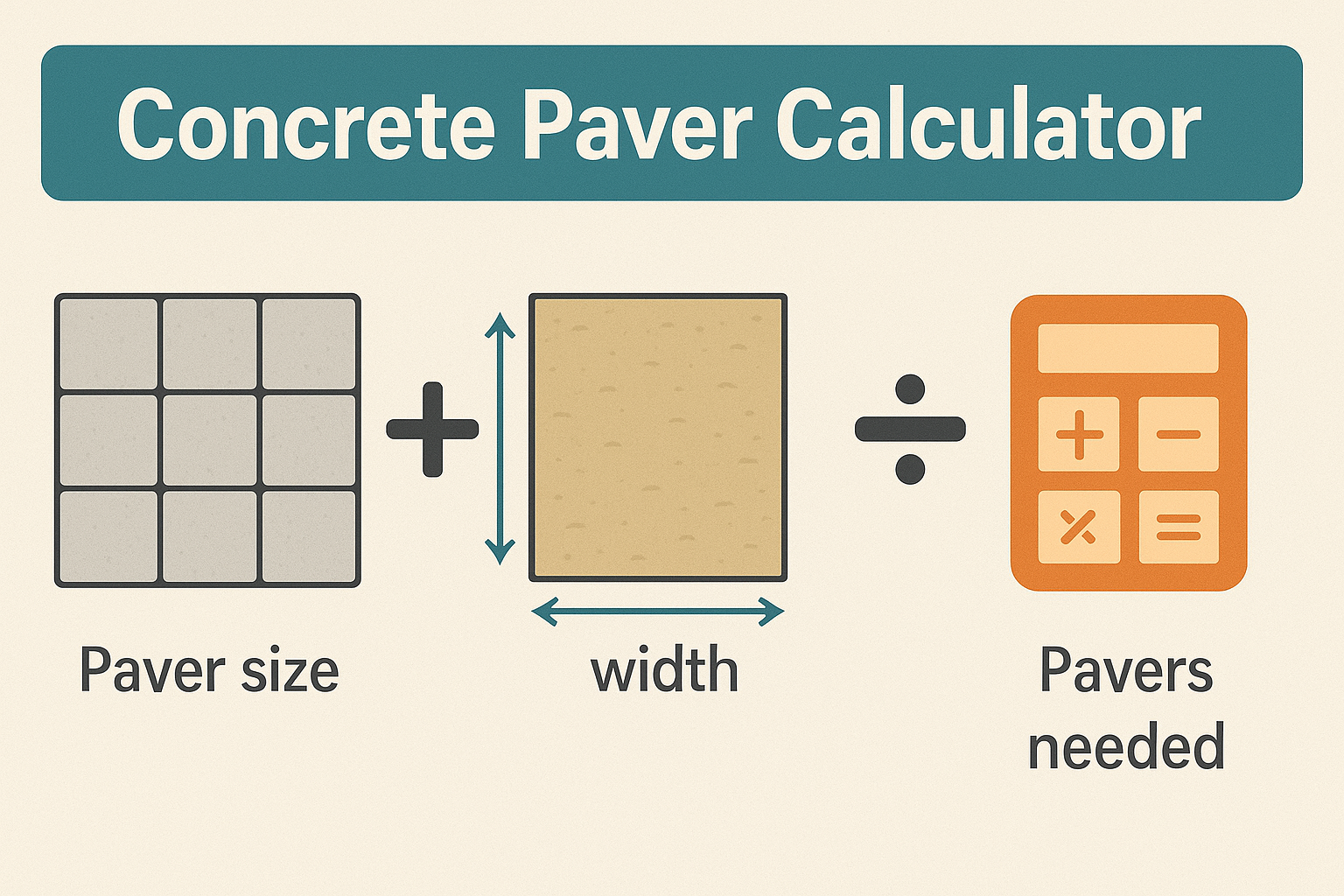Free Concrete Paver Calculator Online
Paver installation is a popular method for creating durable, stylish, and low-maintenance surfaces for patios, walkways, driveways, and outdoor living areas. A concrete paver calculator from Construction Calculators is an essential planning tool that helps contractors and DIY enthusiasts estimate the number of pavers needed for a project. By accounting for surface dimensions, paver size, joint spacing, and waste allowance, this calculator ensures accurate material ordering and cost-effective construction.
What Is a Concrete Paver Calculator?
A concrete paver calculator is a digital tool used to determine the number of paver units required to cover a specific area. It simplifies complex manual calculations and helps users plan their project by estimating material needs, total coverage, and budget. Whether you’re working on a small garden path or a large driveway, this calculator eliminates guesswork and reduces the risk of under- or over-ordering materials.

Why Use a Concrete Paver Calculator?
Using a concrete paver calculator provides several advantages:
- Accurate Estimates: Prevents overbuying or shortages
- Budgeting Aid: Helps estimate project costs
- Efficient Planning: Speeds up material ordering and installation
- Time Saver: Automates the math for quick results
- Supports Design Choices: Adapts to different patterns and paver sizes
Inputs Required for Paver Calculation
To use a paver calculator effectively, you need the following details:
- Project area length (in feet or meters)
- Project area width (in feet or meters)
- Paver length and width (in inches or centimeters)
- Joint width between pavers (optional)
- Waste allowance (usually 5–10% for cuts and breakage)
- Pattern type (e.g., running bond, herringbone, basket weave)
Concrete Paver Calculation Formula
To estimate the number of pavers:
- Convert area and paver dimensions into the same unit (typically feet or inches).
- Calculate total project area:
- Calculate paver coverage (including joint):
- Convert paver area into square feet if using inches:
- Determine total pavers required:
Example Calculation
You have a patio measuring 20 ft by 12 ft. You’re using 6 in x 6 in pavers with a 0.25 in joint and 10% waste.
- Project area: sq ft
- Paver size with joint: sq in
- Paver area in sq ft:
- Base number of pavers:
- With 10% waste: pavers
You would need approximately 974 concrete pavers for this project.
Factors Influencing Paver Quantity
Several conditions affect the actual number of pavers needed:
- Paver shape and size: Irregular shapes need more coverage
- Cutting waste: Complex layouts or tight spaces create more cuts
- Design pattern: Some patterns (like herringbone) require more pavers
- Border pavers: May increase total units needed
- Slope or elevation: Increases effective surface area
Benefits of Using a Paver Calculator
- Reduces calculation errors
- Improves cost forecasting
- Aids in material delivery planning
- Supports eco-conscious purchasing
- Adapts to metric and imperial systems
Common Applications
- Driveways and garage entrances
- Backyard patios and fire pit areas
- Walkways and garden paths
- Pool decks and courtyards
- Public plazas and commercial landscaping
Additional Tools for Paver Projects
- Base material calculator: Estimates crushed stone or gravel base
- Sand calculator: Determines joint sand requirements
- Edge restraint calculator: For perimeter stabilization
- Labor estimator: Predicts installation time and crew size
Tips for Paver Installation Planning
- Measure twice: Confirm dimensions and angles
- Account for slope: Plan drainage with slight incline
- Use string lines and stakes: Mark layout accurately
- Dry-lay pavers: Visualize patterns before installing
- Compact base properly: Use a plate compactor for solid foundation
Design Patterns and Layout Considerations
- Running Bond: Straightforward, minimal waste
- Basket Weave: Classic, suitable for small areas
- Herringbone: Strong interlock, ideal for driveways
- Random or Modular: Decorative, customizable
Each pattern may affect the paver count slightly due to layout efficiency and cuts.
Sustainability and Eco Considerations
Choosing permeable pavers allows water to pass through, reducing runoff and supporting groundwater recharge. A calculator helps plan for these systems with different void ratios and base materials.
Frequently Asked Questions
Q: How much waste should I factor in? A: Typically, add 5–10% for cutting and breakage, or up to 15% for complex patterns.
Q: Should I include edge restraints in the estimate? A: Yes, they are critical for maintaining the shape and preventing shifting over time.
Q: Can I use this calculator for natural stone pavers? A: Yes, as long as you know the average size and allow for higher waste.
Q: How deep should the base be? A: 4–6 inches for patios, 6–8 inches for driveways depending on soil.
Conclusion
A concrete paver calculator is an indispensable tool for any paving project. It eliminates guesswork, reduces waste, and helps ensure you purchase the correct quantity of materials. Whether laying a new patio, creating a driveway, or installing a walkway, this calculator improves efficiency, accuracy, and sustainability. Always consider layout patterns, joint widths, and waste allowances for the most reliable estimates. The Concrete Calculators platform also offers additional tools like the Concrete Block Fill Calculator and the Slab Thickness Calculator to support complete material planning and better results for every phase of your build.
